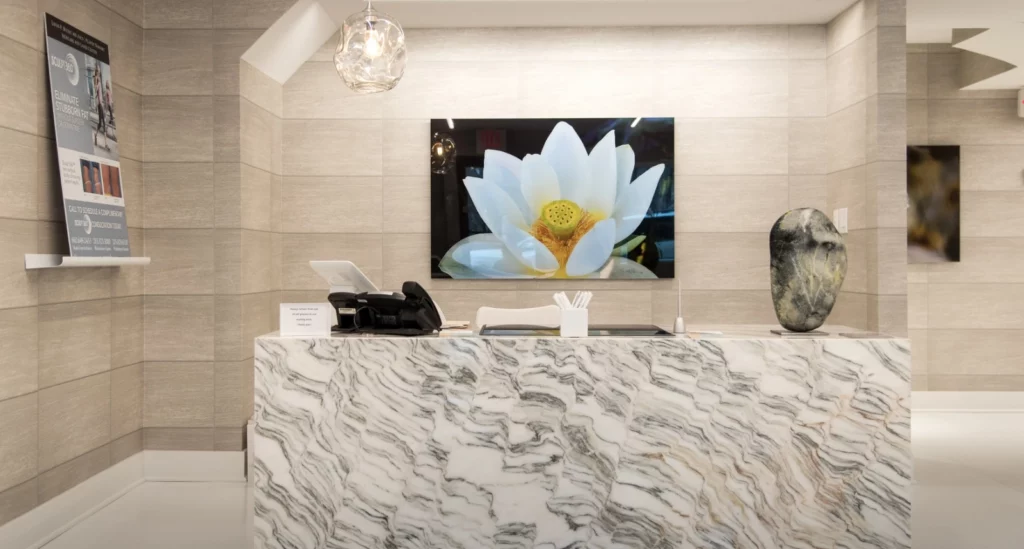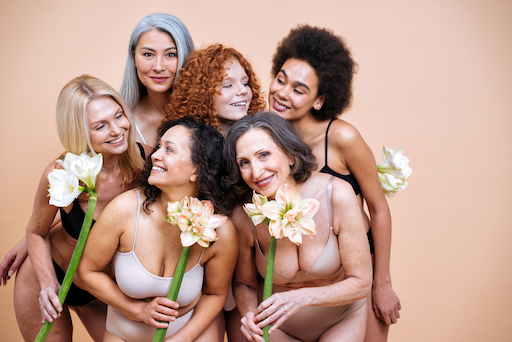
Louis P. Bucky, MD, FACS
Award-Winning, World-Renowned Plastic Surgeon
Premiere Destination for Finest Injectables & Skin Care
February 7, 2024
 For many people, their relationship with their body and their perception of it is never stagnant. Many people may even experience body dissatisfaction in different ways and at different times in life.
For many people, their relationship with their body and their perception of it is never stagnant. Many people may even experience body dissatisfaction in different ways and at different times in life.
However, aging can also bring new perspectives and attitudes about self-image. In fact, research shows that, generally, body satisfaction tends to increase over a person’s lifetime.
Aging itself brings many changes, mentally and physically. Ultimately, it’s important to embrace these changes, or at least accept them, while striving to boost your image of yourself.
Each person’s experience with their body is unique. This means that what heavily impacts one person’s perception of their body may not have the same effect on someone else. Some may celebrate the changes their bodies experience, and others may need more time to adjust.
Further, your body isn’t stagnant over time, and neither is your body image. You may become pregnant and have a baby, which means your body may change to accommodate the growth of new life.
You may develop stretch marks, loose skin, and deflated breasts, among other changes. However, all of these changes can be embraced or remedied, depending on how you feel and look. For example, you may have more cellulite and stretch marks postpartum.
As you age, you may find signs of a life well-lived, whether that’s more wrinkles from laughing and smiling or more aging spots from long days in the sun. Your skin may sag more due to the natural forces of gravity and time. Your weight may change both in times of hardship and in times of celebration.
Regardless of the significance of these changes, their impacts on the body aren’t always appreciated. However, your body should be accepted — and even celebrated, if you feel up to it — no matter how old you are or where you are in your self-image journey.
Every part of life comes with challenges, and as you age, a complicated image of your body may be one of those challenges. Luckily, there are tools and techniques you can use to maintain a healthy self-image at all ages.
Challenge Negative Thoughts About Yourself
Everyone feels insecure from time to time. However, it’s important to challenge the thoughts behind these insecurities when they occur.
If you find yourself thinking negatively about yourself and your body, you can take steps to break the habit. When a negative thought appears, you can:
Over time, you can build the ability to question the validity of these thoughts and improve your self-image.
Though it can be powerful for many, the concept of body positivity doesn’t resonate for some; in fact, it may be a completely unrealistic expectation. Even if you’re inspired by body positivity, it may not be manageable for you to love your body or how you look all the time.
That is why many people have pushed the idea of “body neutrality” — a concept where you simply accept your body as the neutral thing it is. After all, your internal organs aren’t attached to a moral compass, so why should your appearance be held to a different standard?
Developing and maintaining a healthy self-image is a skill that is learned over time. Just like any other skill, it is helpful to find a role model, mentor, or teacher to help you along the way.
A positive role model for someone struggling with their self-image is a person who:
Finding a person in your life or online who exhibits these traits is one way to learn more about what it means to be body-positive.
It’s only natural for people to surround themselves with people who inspire and motivate them. But, inevitably, comparisons may come into play as you evaluate your self-image. These comparisons are a common occurrence, with 42% of young women making comparisons frequently.
If you find yourself making comparisons between yourself and others around you, there are steps you can take, such as:
Avoiding comparisons can help you to feel more confident in yourself and improve your interactions with others.
By caring for yourself, you’re acknowledging that you are worthy of care. That is an important step. Some ways you can improve your self-image through self-care include:
For some people, medical interventions such as plastic surgery are a helpful tool for improving body image and well-being, with research showing that most cosmetic surgery patients feel better about themselves and their bodies after surgery. These procedures can range from entirely non-surgical and minimally invasive to more traditionally surgical procedures, or even a combination of the two.
Some cosmetic procedures reduce the effects of aging — or help prevent the onset of these effects — that can lead to a negative self-image, including:
Consulting with a qualified professional is an important step to take before deciding on a cosmetic procedure. Under the guidance of a trusted provider, these treatments provide a way for you to improve both your body image and well-being, regardless of your age.

If you live in Philadelphia, Ardmore, or nearby communities in PA and would like more information on our practice, or if you would like to schedule a consultation with Dr. Bucky, please contact our office today.